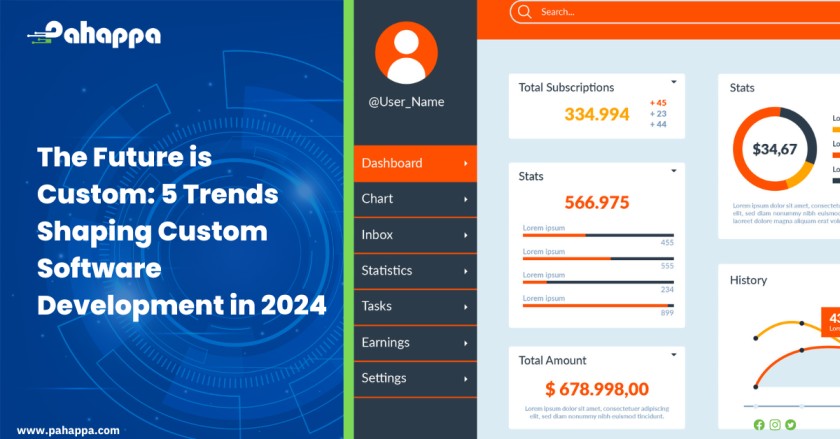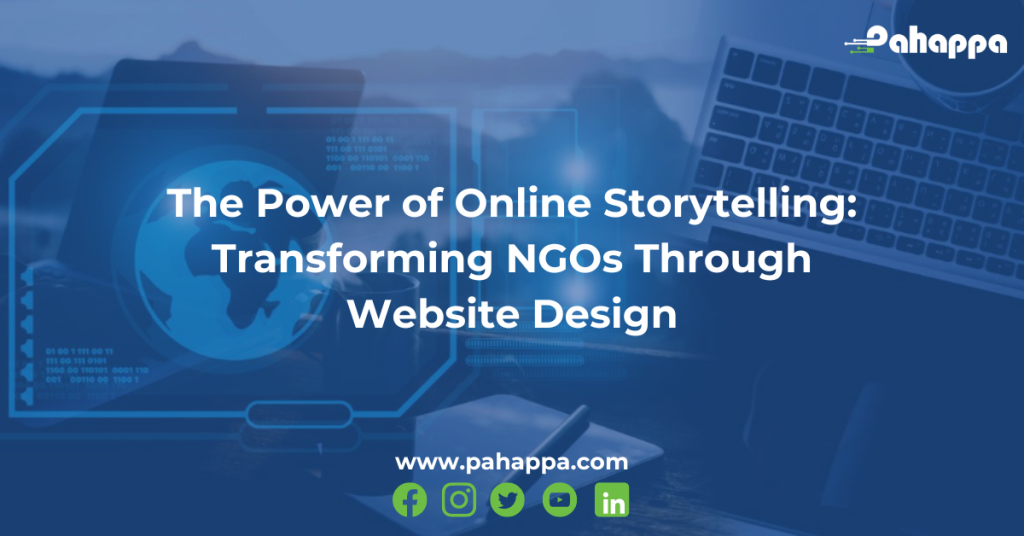Creating custom software solutions is rapidly evolving, and 2024 promises to be a year of groundbreaking advancements and transformative trends in this dynamic field. As technology continues to propel innovation, businesses are embracing custom software development to gain a competitive edge, optimize operations, and deliver tailored experiences to their users. Here we discuss the five trends shaping the future of custom software development in 2024 and Key aspects of custom software development in 2024
5 Trends Shaping Custom Software Development in 2024
- AI-Driven Customization
Artificial Intelligence (AI) is set to revolutionize the customization process in software development. In 2024, AI’s capabilities will significantly expand, particularly in analyzing vast amounts of user data. Through machine learning algorithms, AI will process user behavior, preferences, and data patterns, enabling the creation of hyper-personalized software solutions. Predictive analytics and recommendation engines driven by AI will allow the software to dynamically adapt to user needs in real-time. For instance, AI algorithms can optimize user interfaces, recommend personalized content, and even predict potential issues, thereby elevating user satisfaction to unprecedented levels.
- Low-Code/No-Code Development
The rise of low-code/no-code platforms is democratizing software development. These platforms are gaining more prominence in 2024, empowering businesses to build custom software with significantly reduced coding requirements. Non-technical users can leverage intuitive visual interfaces and drag-and-drop tools to create functional applications without extensive coding knowledge. This trend accelerates development timelines, minimizes costs, and fosters collaboration between developers and other stakeholders within the organization. As a result, rapid prototyping, quick iterations, and faster deployment of software become feasible.
- Blockchain for Enhanced Security and Transparency
Blockchain technology is transforming the landscape of custom software development by offering unparalleled security and transparency. In 2024, the integration of blockchain into custom software solutions will increase, providing immutable records, secure and tamper-proof transactions, and decentralized data storage. Applications of blockchain range from ensuring data integrity in supply chain management to revolutionizing financial transactions and digital identities. The inherent cryptographic features of blockchain technology enhance trust and security within custom software applications, making them less susceptible to cyber threats and data manipulation.
- Edge Computing Revolution
Edge computing, a paradigm that processes data closer to its source rather than relying on centralized servers, is poised to revolutionize software development in 2024. This approach facilitates faster data processing and real-time decision-making, leading to highly responsive and personalized software experiences. With reduced latency, custom software applications, especially those involving IoT (Internet of Things) applications, gaming, and real-time interactions, can deliver seamless experiences even in bandwidth-constrained environments. This trend significantly enhances user experiences and supports applications requiring real-time responsiveness.
- Emphasis on Cybersecurity and Privacy
As cyber threats evolve, cybersecurity and data privacy will continue to be paramount in custom software development in 2024. Businesses will prioritize incorporating robust security measures into their software solutions right from the development stage. Compliance with stringent data protection regulations such as GDPR (General Data Protection Regulation) and CCPA (California Consumer Privacy Act) will drive the integration of advanced encryption techniques, secure authentication protocols, and proactive threat detection mechanisms into custom software. The focus on cybersecurity and privacy aims to safeguard sensitive data and ensure user trust in the software’s integrity.
Key aspects of custom software development in 2024 include:
Requirement Analysis
- Thorough Understanding of Client Needs: This phase involves in-depth discussions and consultations with the client to understand their business processes, pain points, and specific requirements. It includes gathering information about functionalities, features, workflows, and user expectations. The goal is to have a clear understanding of what the software should achieve to address the client’s challenges effectively.
- Detailed Requirements Gathering: Detailed documentation of all gathered requirements, often using tools like requirement specification documents, use cases, and user stories. This documentation acts as a foundation throughout the development process, guiding subsequent stages.
Design and Planning
- Creating Comprehensive Blueprint: This phase involves translating the gathered requirements into a comprehensive software design. It includes defining the software architecture, specifying functionalities, designing the user interface (UI) and user experience (UX), and detailing technical specifications.
- Wireframing and Prototyping: Creating wireframes, mockups, and prototypes to visualize the software’s layout, navigation, and functionality. These visual representations help stakeholders understand the software’s look and feel before development begins.
- Establishing Development Roadmap: Planning the development process, including timelines, milestones, resource allocation, and project management methodologies (like Agile or Waterfall). This roadmap serves as a guide for the development team throughout the project lifecycle.
Development
- Coding and Implementation: Skilled software engineers and developers write code based on the approved design and specifications. This phase involves using programming languages, frameworks, and tools to build the software solution while adhering to coding standards and best practices.
- Database Development and Integration: Developing databases and integrating them with the software to manage and store data efficiently. It includes designing database schemas, creating data models, and ensuring data security and integrity.
Testing
- Rigorous Testing: Various types of testing are conducted to ensure the software’s quality, functionality, performance, security, and usability. Functional testing checks if the software meets the specified requirements, while performance and security testing assess system stability and protection against vulnerabilities. User acceptance testing (UAT) involves end-users validating the software against their needs before deployment.
Deployment
Installation and Configuration: Once the software passes all tests and receives client approval, it’s prepared for deployment. This involves installing the software, configuring it according to the production environment, and ensuring its readiness for end-users.
Maintenance and Support
- Ongoing Maintenance: After deployment, the software requires continuous maintenance. This includes bug fixes, updates, enhancements, and addressing any issues that arise during real-world usage.
- User Feedback and Updates: Gathering user feedback to improve the software’s functionality, user experience, and performance. This feedback informs updates and new feature additions, ensuring the software remains aligned with evolving business needs.
- Continuous Technical Support: Providing ongoing technical support to address user queries, troubleshoot issues, and ensure the software operates smoothly.
The future of software is custom, and 2024 is the year to claim your competitive edge. At Pahappa Limited, we’re not just software developers; we’re visionaries, architects, and allies in your digital transformation journey. Let us harness the power of AI, low-code platforms, and cutting-edge technologies like blockchain and edge computing to craft a software solution that’s as unique as your business. Imagine seamless experiences, hyper-personalized features, and unparalleled security – your bespoke masterpiece awaits.
Don’t settle for one-size-fits-all solutions. Contact us today. Our team of experts will dive deep into your needs, meticulously map your vision, and translate it into code that speaks your language. Together, we’ll build the future.











